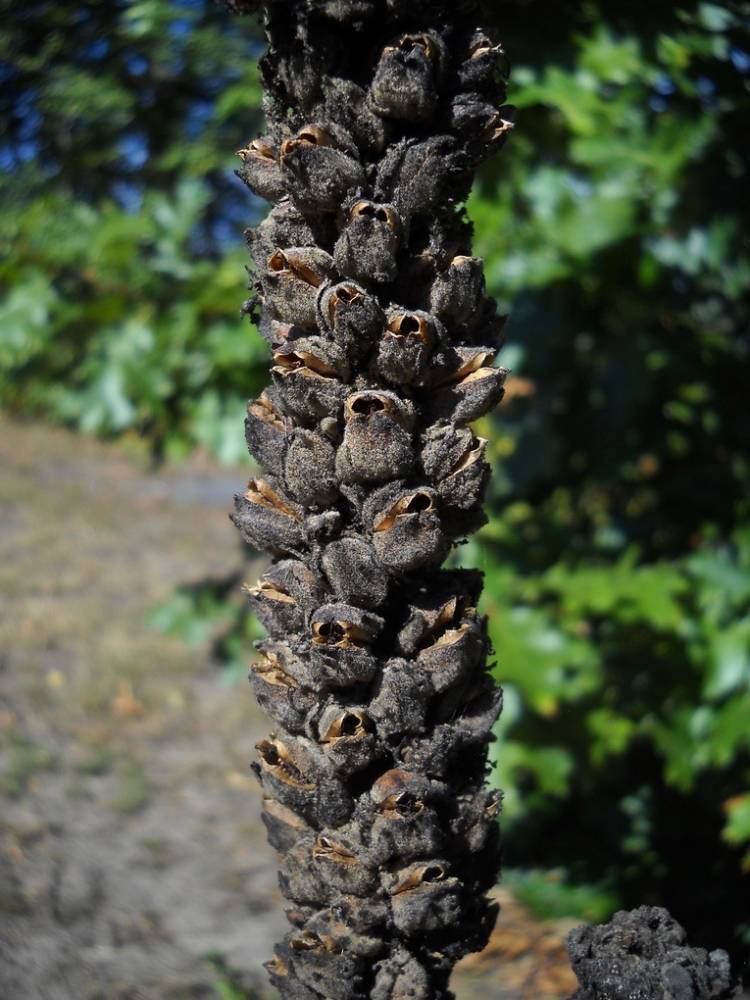common mullein
The common mullein is an introduced biennial that is covered all over with a layer of hair-like structures called trichomes that are particularly thick on its leaves. In its first year, it grows as a small grayish green rosette of fuzzy leaves close to the ground. In its second year, the leaves become larger and grow alternately up a stem that can quickly reach a height of seven feet. It is found throughout Salter Grove except along the portion of Pond trail that is always shaded because its seeds require open ground for germination.
Only a few yellow flowers bloom at a time starting from the bottom of the long flowering spike upwards. Each flower develops into a two-parted seed capsule that contains numerous seeds. The stalk persists upright through winter and seeds are cast away from the plant each time it is shaken by wind.
The common mullein is native to Europe, Asia and Northern Africa and was introduced to North America in the 1700's for a surprising range of uses. It was used as a cough suppressant, a respiratory stimulant, a treatment for diarrhea, an insecticide for mosquito larvae, and a fish poison.
For more information:
https://gobotany.nativeplanttrust.org/species/verbascum/thapsus/
https://www.ediblewildfood.com/mullein.aspx
http://www.florafinder.com/Species/Verbascum_thapsus.php
https://www.minnesotawildflowers.info/flower/common-mullein
https://www.illinoiswildflowers.info/weeds/plants/great_mullein.htm

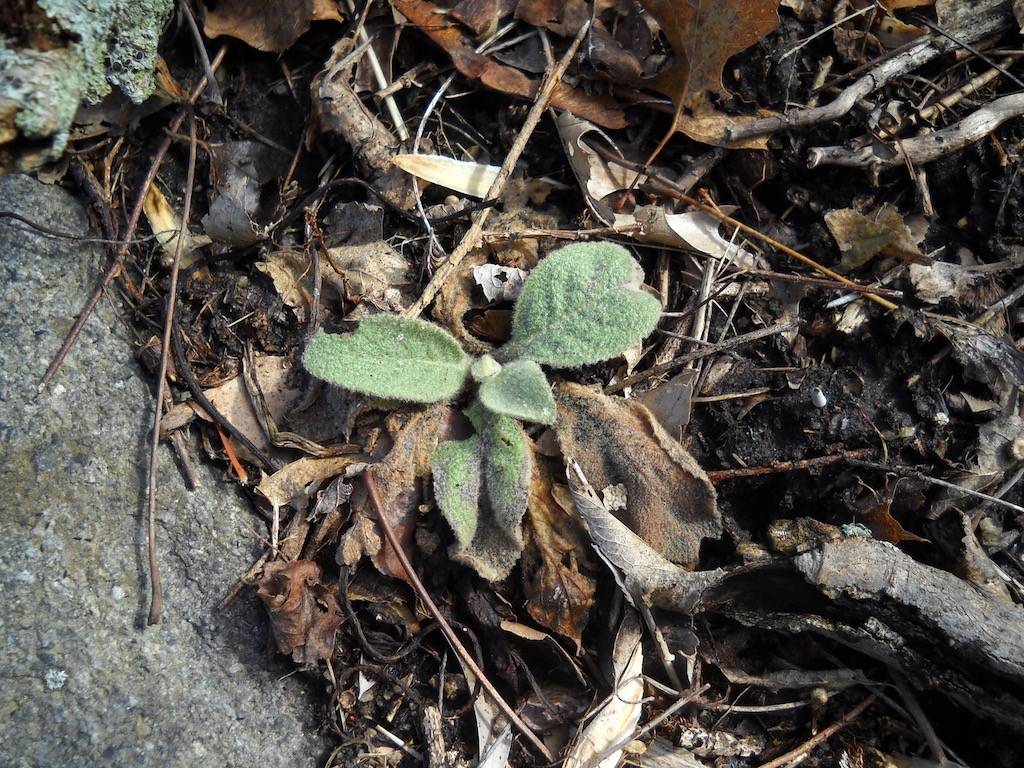
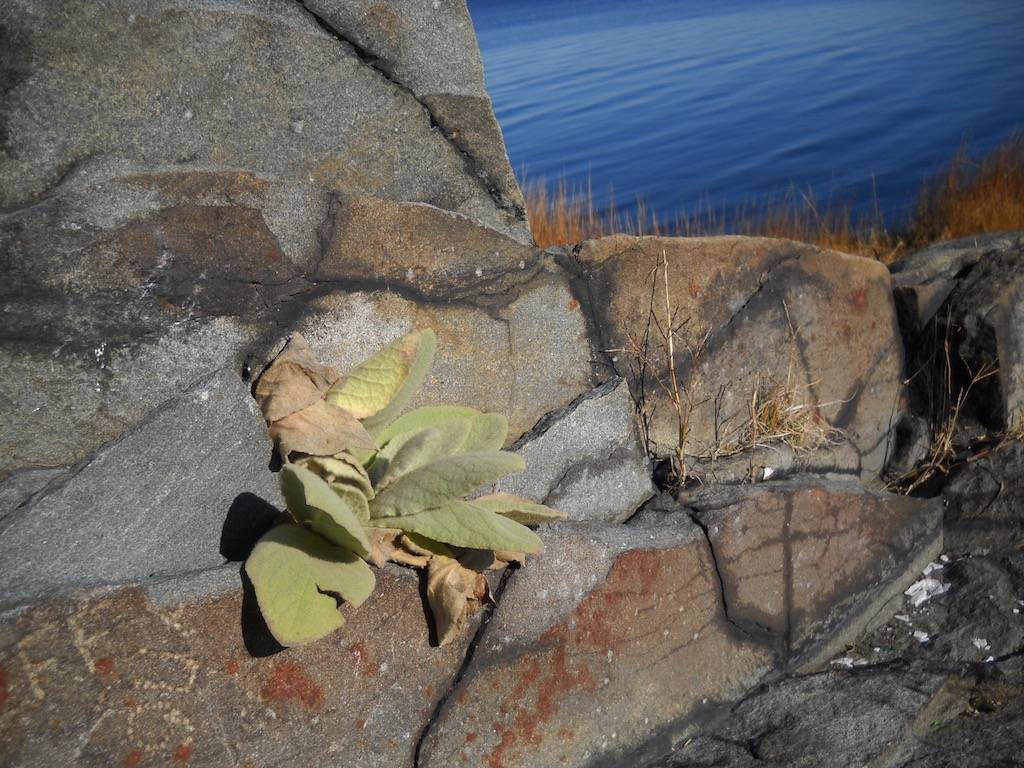
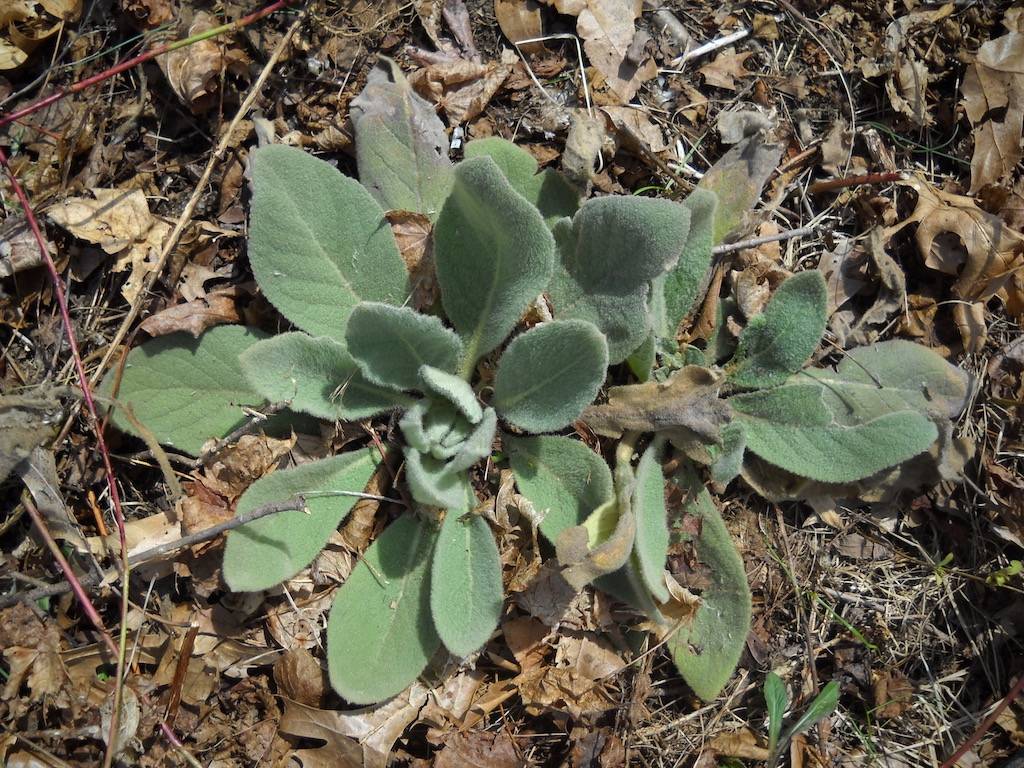
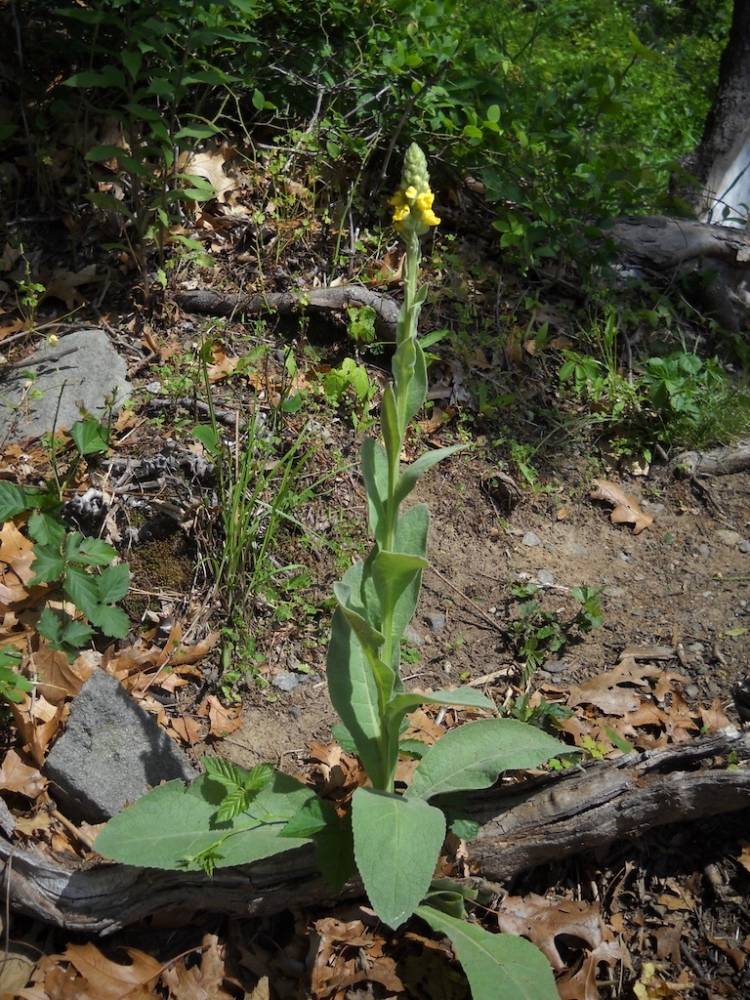
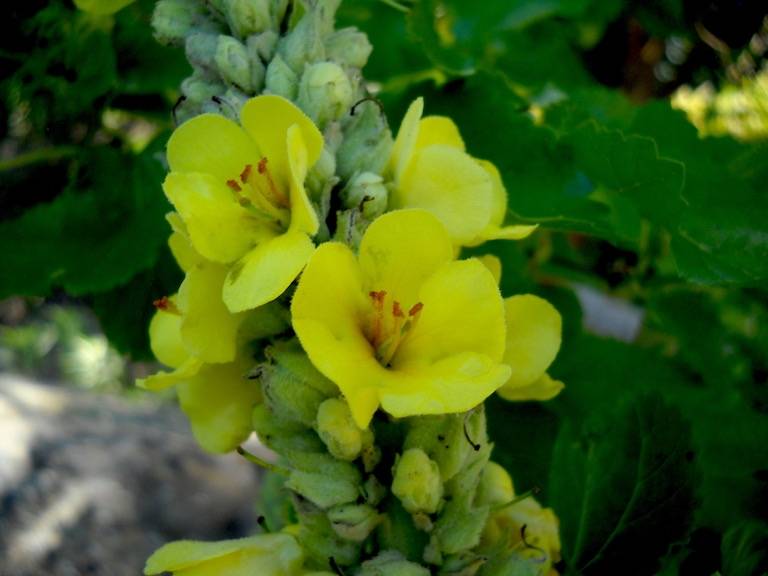
.jpg?w=350?blur=10)
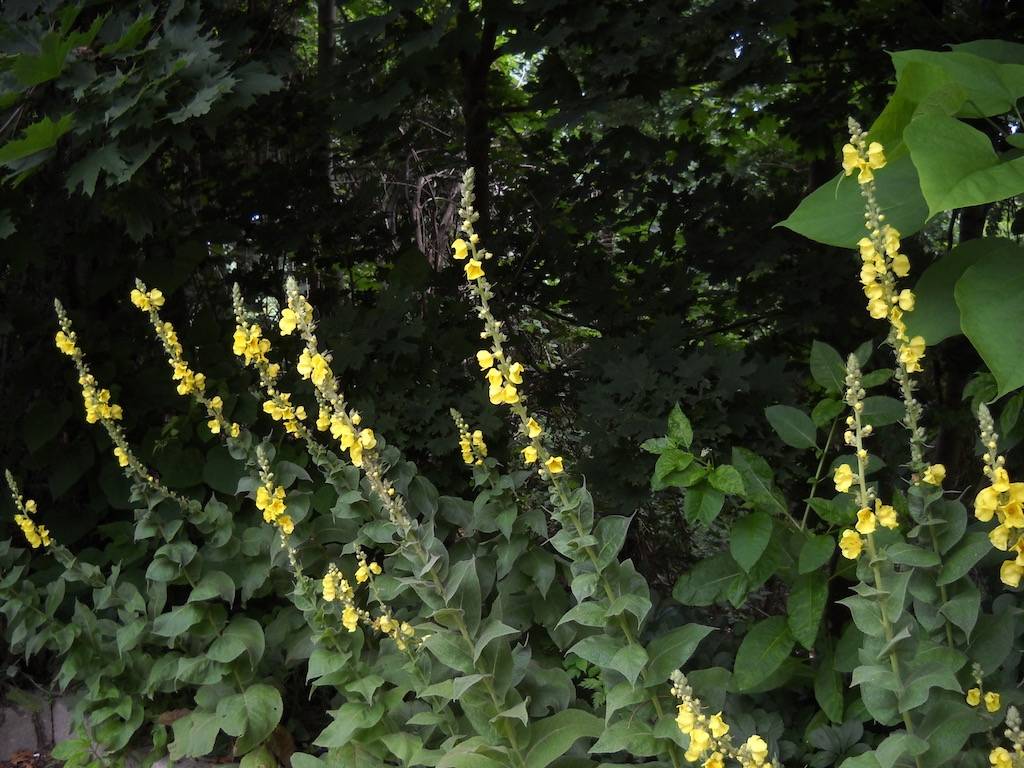
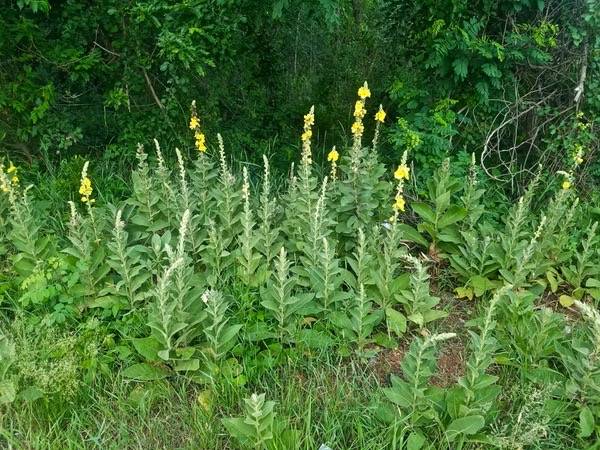
.jpg?w=350?blur=10)
